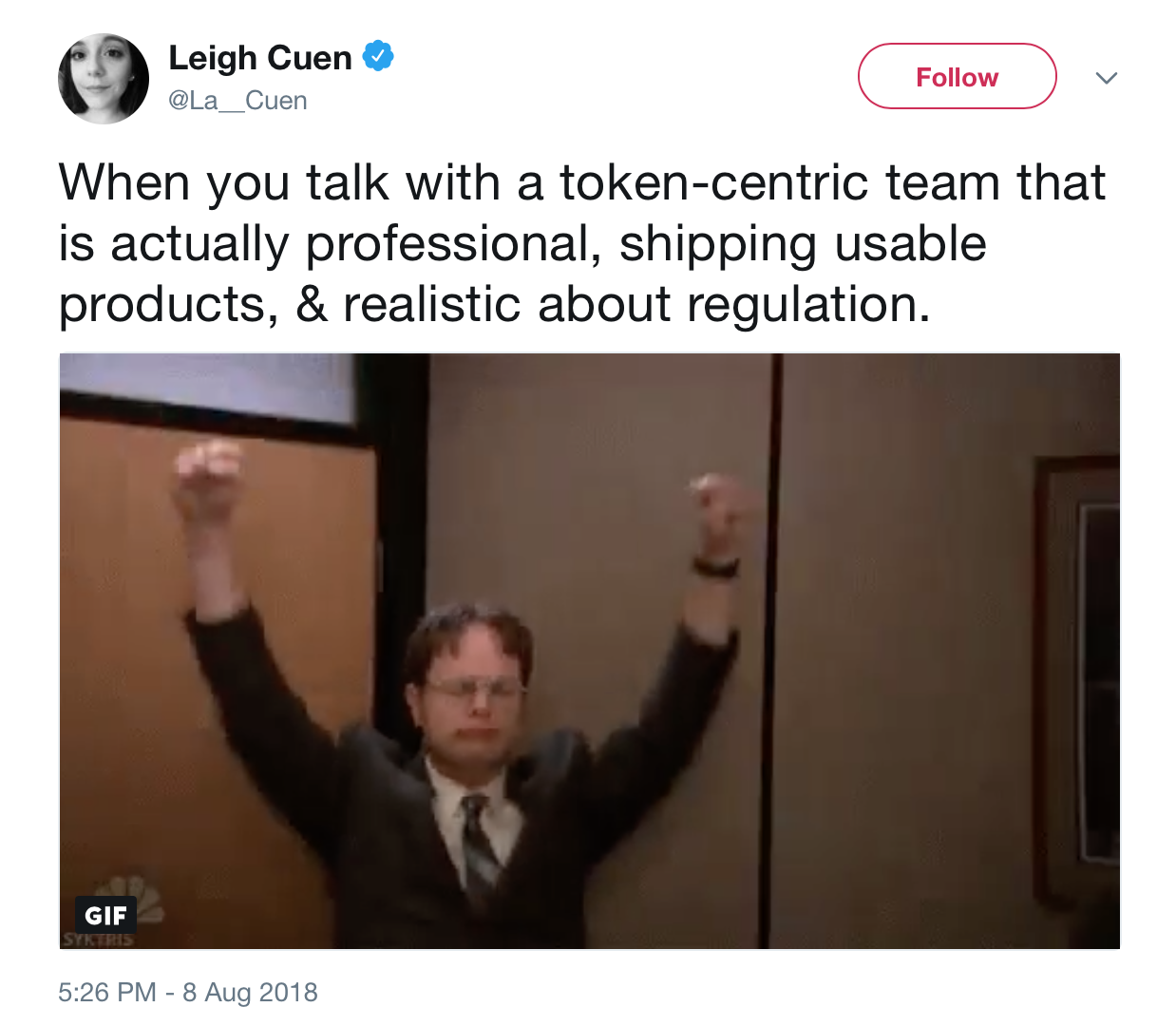What Top Blockchain Journalists Are Looking For...
What can I do to get coverage in the media for my blockchain startup? What can I do to attract the attention and interest of the top blockchain journalists in the industry?
These are common questions among startup founders - and they are good questions to ask.
Unfortunately, too often people think that media only exist to be dutiful amplifiers of bland marketing messages. Worse still they get angry when a crypto reporter doesn’t agree to cover their startup despite multiple emails and aggressive pitches.
In order to understand what captures the imagination of top blockchain journalists and what makes them open to writing about a project, it is important to understand one simple fact:
In general, journalists are looking for the same things that investors are.
This may come as a surprise, especially if people mistakenly view media outlets as “servants of the industry.”
But as evidence to the statement above, consider this tweet by CoinDesk reporter Leigh Cuen:
READ MORE: HOW TO APPROACH CRYPTO JOURNALISTS
The concise content of this Tweet reveals several fundamental points that can help us understand what a blockchain reporter values (and what he or she does not value) when interacting with startup teams.
Let’s break it down.
1) “…professional…”
There are many aspects to the word “professional” - but the first and most fundamental one is respect.
Reporters - just like investors - are offering a startup something of great value. In the case of investors, it is money (and resources). In the case of journalists it is coverage in their media outlet. This requires great trust and it is not to be taken lightly.
Being respectful is absolutely essential to acquiring and retaining the attention of a journalist. Saying “thank you,” offering prompt replies to requests for information, being honest and transparent about flaws or mistakes - these are all parts of respect.
Professionalism also extends to other basic areas of interaction with journalists:
having a dedicated set of materials prepared for media
offering clear, concise answers (even in the form of a written FAQ)
designating a single point of contact which is available 24/7
Adhering to a simple set of professional standards will go a long way towards getting the attention of journalists - both in the blockchain space and beyond.
READ MORE ABOUT PR FOR BLOCKCHAIN COMPANIES
2) “…shipping usable products…”
This point may seem self-evident, but it is very definitely worth mentioning and analysing in more depth.
There are two parts to this point.
a) “Shipping”
What is important to notice here that the journalist (in this case Leigh Cuen) is taken by the fact that a team is “delivering” a product.
Shipping or delivering means that the central part of the story being presented to the journalist is not theoretical or imaginary - but it is grounded in facts. The product or project is real - it is happening.
Remember - at the end of the day, journalists are all about facts. A shipped product is a fact, and if it’s truly changing the world, it will be worth reporting on.
This brings up the question of timing. Many startups mistakenly think that it is possible to pitch a journalist as soon as their idea is formed.
The illustration above proves that this is wrong. The timing of a pitch is as important (or more so) than what the subject actually is. If you share the story of your new protocol with a blockchain journalist 6 months before it goes live - you are much less likely to secure coverage.
b) “usable products”
The second part of this point hinges on the word “usable.” Here again we see that the attitudes of journalists and investors are very much in sync.
A product is no good to an investor if it doesn’t meet a real-world need or fill a gap in that is widely recognised. This is what VC firms look for and it is what journalists pay attention to as well.
Do you think a reporter would write a story about a man who invented a rubber sword? No - because, while it might be curious, it’s not a usable product.
Remember - it’s all about facts. Usable products mean that real people will be really using these products.
That’s worth reporting on.
3) “...realistic about regulation.”
We can ignore, for the moment, the last part of this observation. Regulation is certainly a thorny subject for blockchain and crypto companies - but it is not the main point of this article.
What is important is the “realistic” part. Again (at the risk of sounding like a broken record), journalists are interested in facts.
While it’s true that the world of crypto and blockchain have produces some fantastically successful and mind-boggling projects (at least judging by the amount of money raised), it is absolutely not believable to think that EVERY SINGLE company can turn the world on end.
It’s not realistic. It’s not real. And blockchain journalists will not take it seriously.
What can and does inspire trust among investors, journalists and the greater public, is a team that is well aware of its shortcomings or its limited possibilities.
It might be tempting for the sake of “pumping” to talk in terms of world disruption and completely new systems, but all things being equal this is not a message that will resonate with a critical audience.
Instead, what will garner the interest of a crypto journalist is a team’s open admission that it has not solved all of its problems.
When presented to an investor, this attitude inspires confidence and also provides an opportunity for the investor to contribute more value. After all, who can help a team that has everything already figured out?
Conclusion
These simple guidelines should help you have a clearer picture of what blockchain journalists look for when evaluation media pitches.
To put it simply - coverage goes to those who “just do it."




